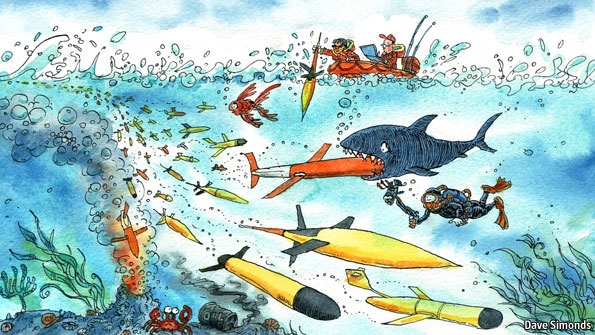Gliders are the Future of Oceanography

Similar to the unmanned aerial drones that are changing everything from warfare to aerial surveillance, these underwater torpedo like devices are extremely versatile and cost-effective. Definitely an example of how modern technology goes beyond the internet to allow us to research and monitor the real world — which on this ocean planet means the oceans.
Even when we take notice of the fact that almost 72% of the Earth surface is ocean, we tend to overlook how vast its proportion of the biosphere is. On land, life only goes a few feet into the soil, and upward to the tops of trees, perhaps the height of bird flight — all together hundreds of feet. The ocean goes down to a maximum of thirty five thousand feet and averages two miles.
As a result, the sea comprises 99.97 % of the planet’s biosphere. Rather amazing. That is why something as innocuous as the little algae — the phytoplankton at the base of the marine food chain are so important. They are throughout the world’s oceans. Phytoplankton are the largest biomass on the planet. Important to us? Consider that they make half the oxygen we breathe. Every bit of petroleum was produced by phytoplankton after a few million years of pressure and heat. Ultimately all the animals in the sea have plankton as their source, whether it be as direct food, such as the blue whale, or the base “pastureland” on which others graze, who are then eaten by other marine life, and up the food chain. So, have you hugged any plankton lately?
Back to gliders… they enable us to do modern cost effective studies down to the plankton. Lots of exciting discoveries to come. It is a new age of oceanography.
